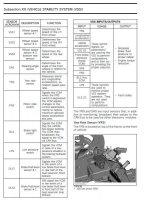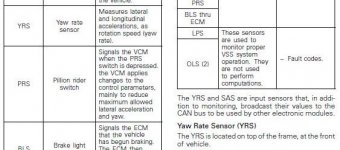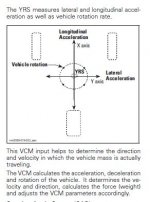Yeah, it is all tied together. The yaw sensor, front and rear wheel speed sensors, steering angle sensor, pillion rider switch, brake fluid level sensors, it all works together to determine when the nanny takes some action and what action it takes.
Even if the nanny is being activated by the tire lifting, there is also lateral G-forces working to lift the tire. Tires don't normally lift going in a straight line. The steering angle sensor is feeding the handlebar position into the computer also, which would be telling the computer if the wheel lifted due to a straight line jump or due to lateral forces in the turn.



